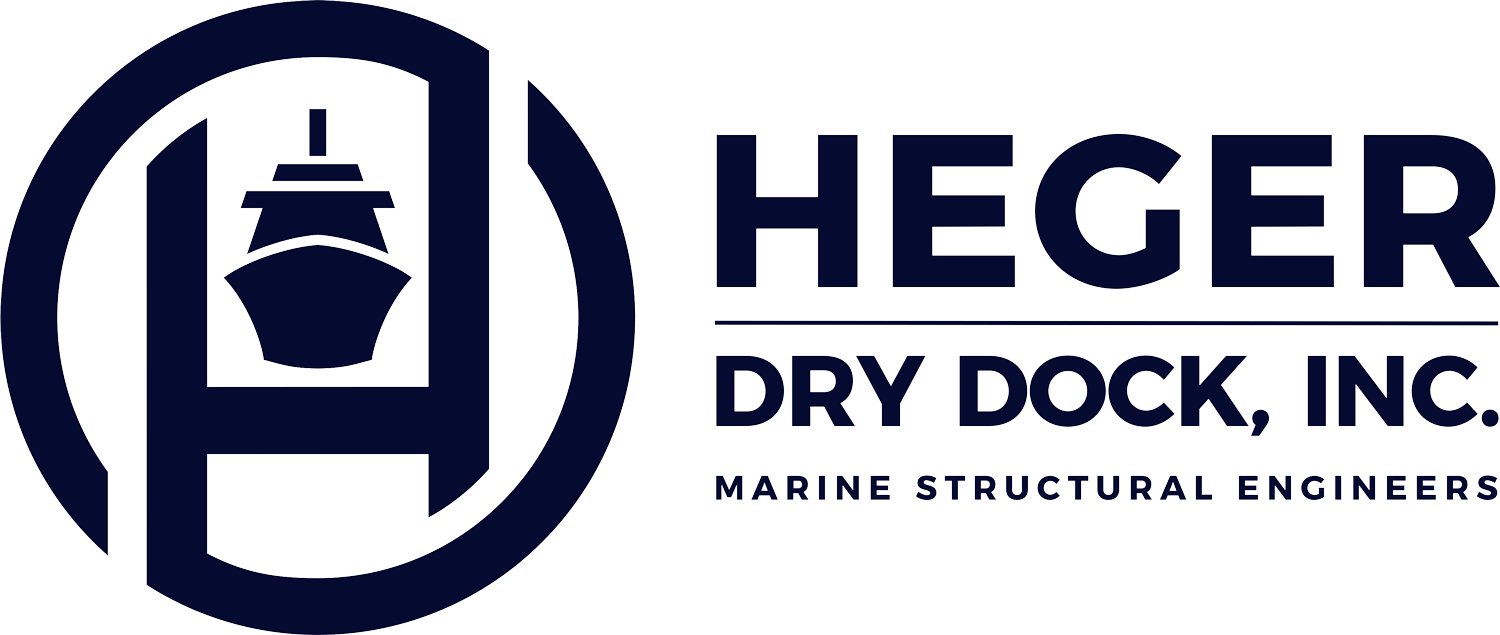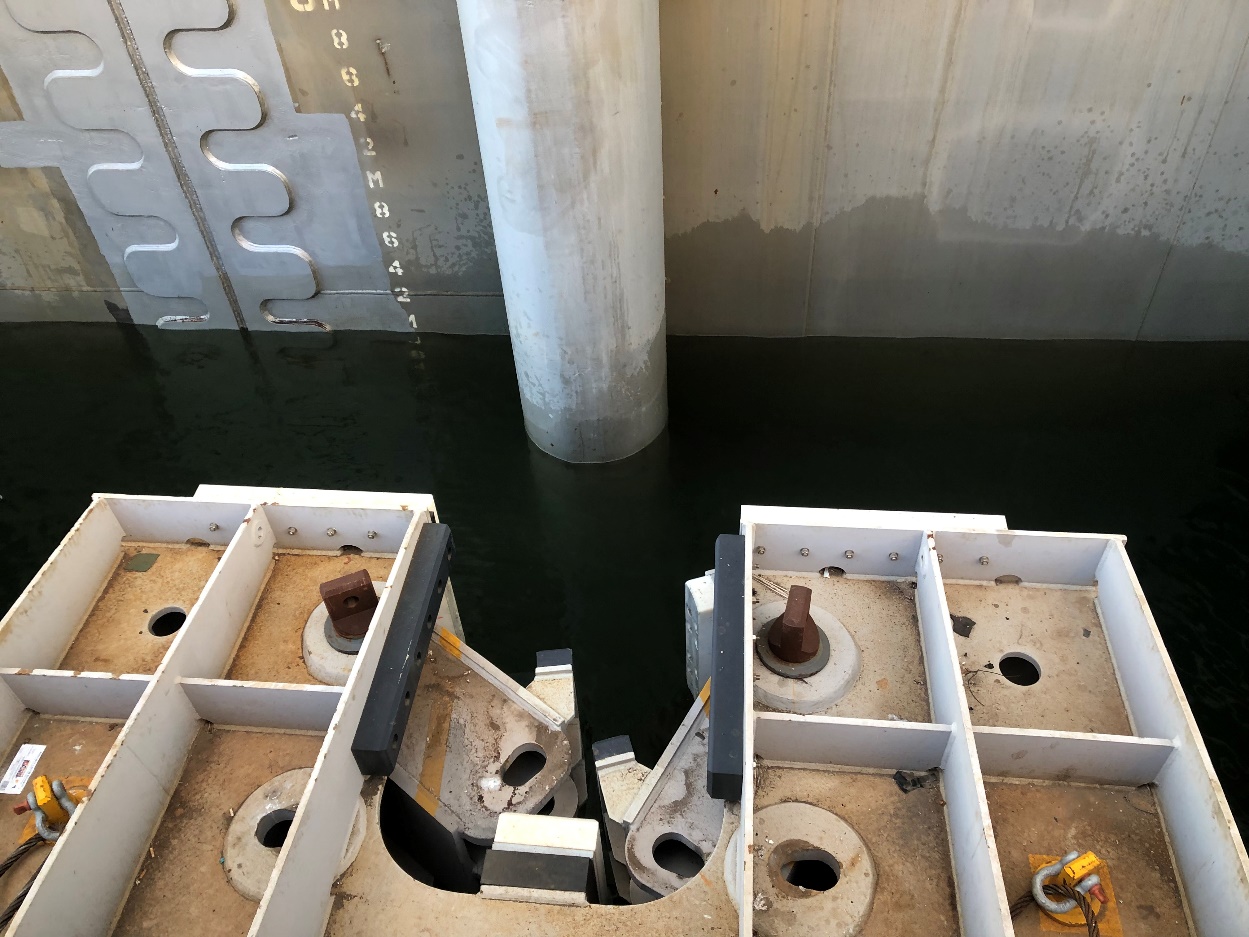
HEGER developed the “Quick-Disconnect” type mooring system for docks which are required break from its mooring location frequently which may be the case if the dock has to translate to its submergence berth or is utilized in transfer and launch operations. The system is comprised or a pipe spud and a gripper jaw system.
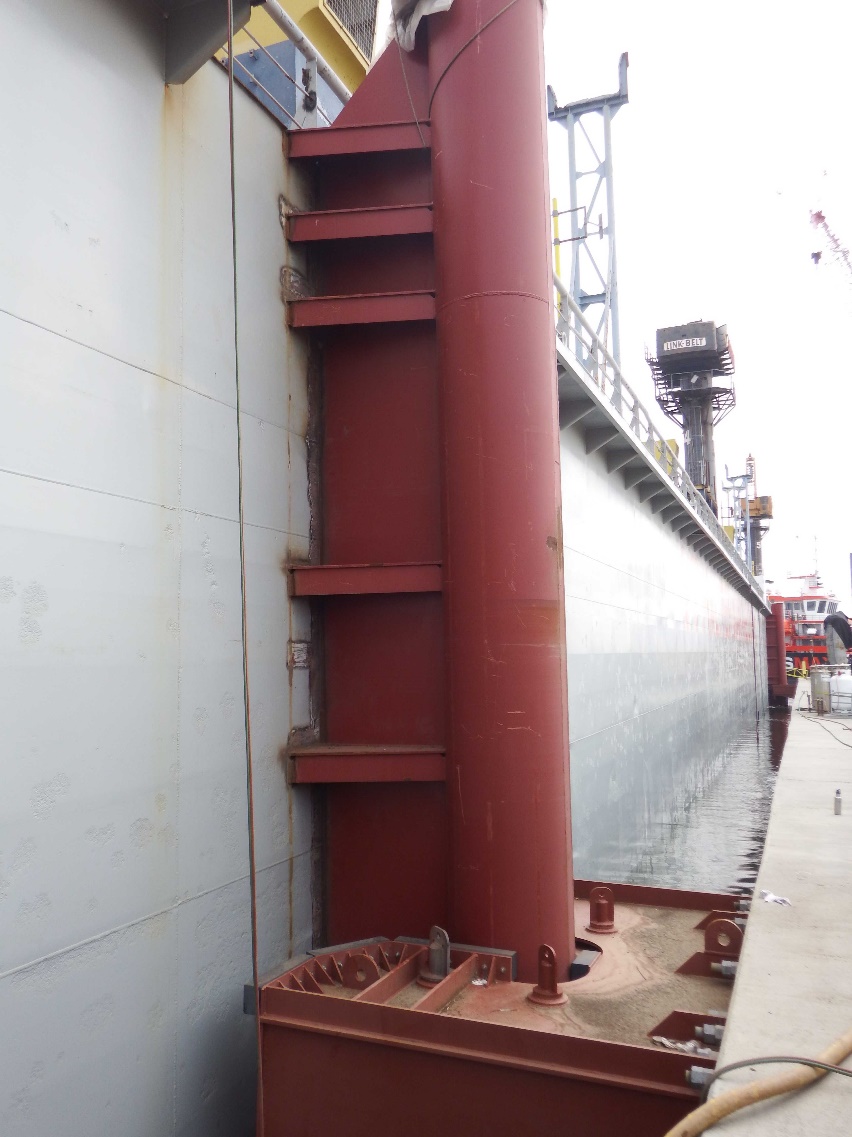
The geometry of the pipe mooring spud in combination which the gripper jaw configuration provide a natural “self-centering” feature which allows operators to safely guide the large floating dry dock into the mooring housing with ease.

Once the dock is maneuvered into the position, series of locking pins are secured through the gripper jaws and the dock is secured.
The pins are usually inserted with the aid of a fork lift or chain fall system.
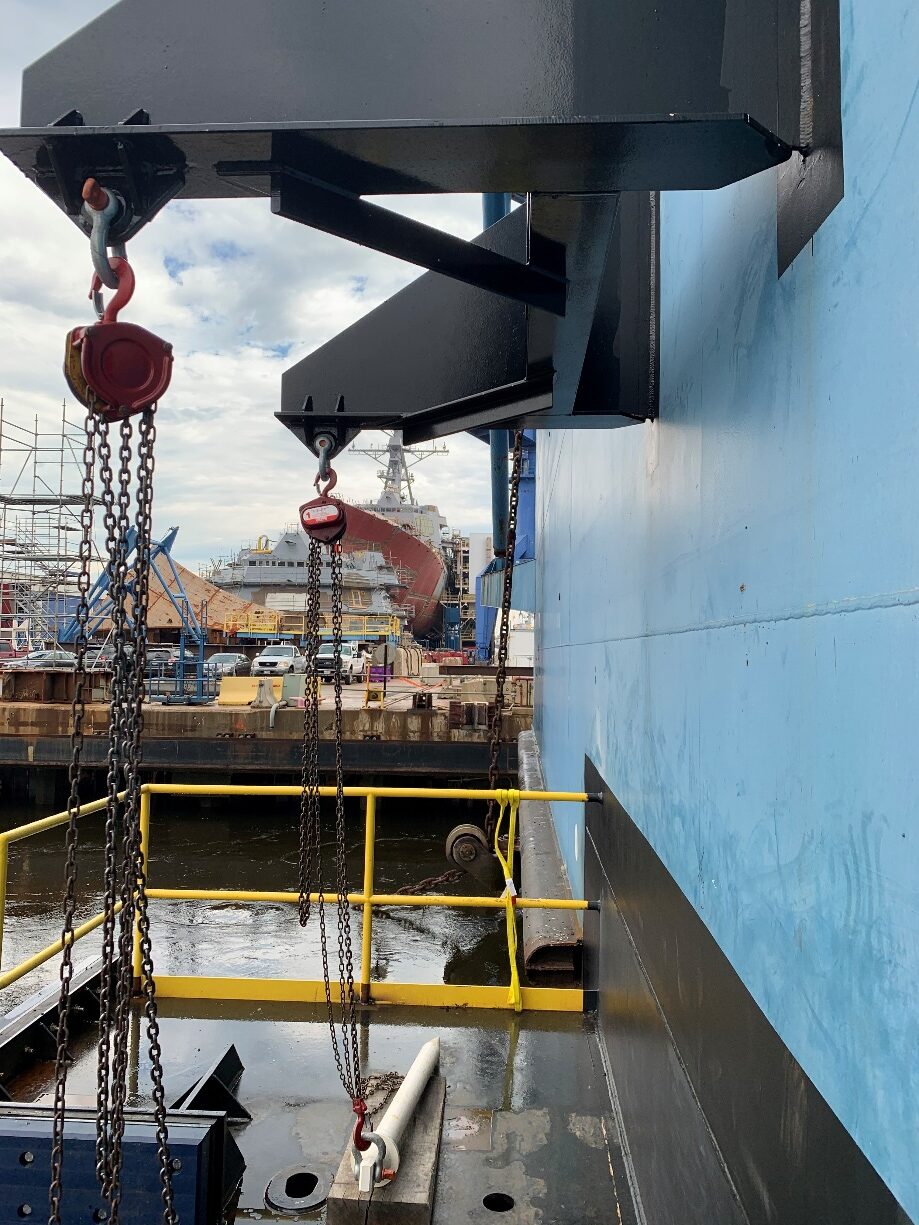
If constructed to the specified tolerances and alignment, the clearances between the mooring spud pipe and the bearing pads are sufficient to allow the dock to trim and list, during docking evolutions, without binding. A lot clearances also allow the dock to grow and shrink, within the mooring system, as environmental temperatures fluctuate through the course of a day or year.
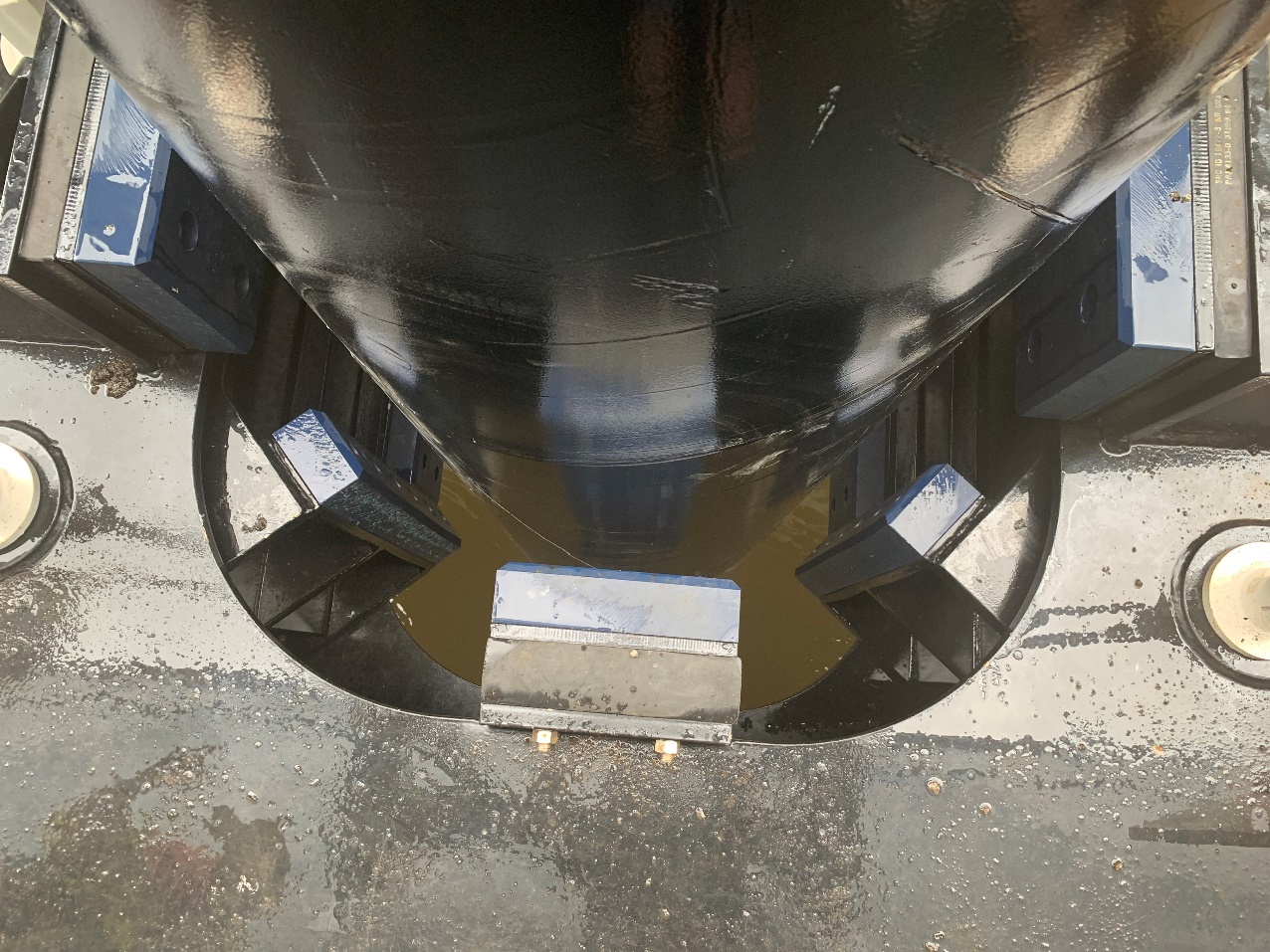
The bearing pads are also typically designed in with a flexible rubber pad to dampen the effects of dynamic loads such as wave action or seismic activity.
